2023 Tata Harrier facelift review, first drive - matches the hype?
Now the size, and the presence that comes with it, have been the Tata Harrier's biggest draw in the crowded mid-sized SUV segment. Few SUVs give you as much attention for the price as the Harrier. But rivals aren't holding back, which is why you now have this, the mid-life update to the Harrier. As we saw with the Nexon, this refresh is quite an extensive one as far as facelifts go, where Tata Motors seems to have tried to broaden the Harrier's appeal.
2023 Tata Harrier facelift Styling
That being said, Tata Motors seems to have doubled down on the presence bit with the new face, which to start with fits seamlessly enough into the unchanged bodywork. The full-width DRLs with the welcome animations are a great mood enhancer while the heavy dose of gloss black and the sharp sculpting around the discreet lighting makes the Harrier far less bulky to look at.
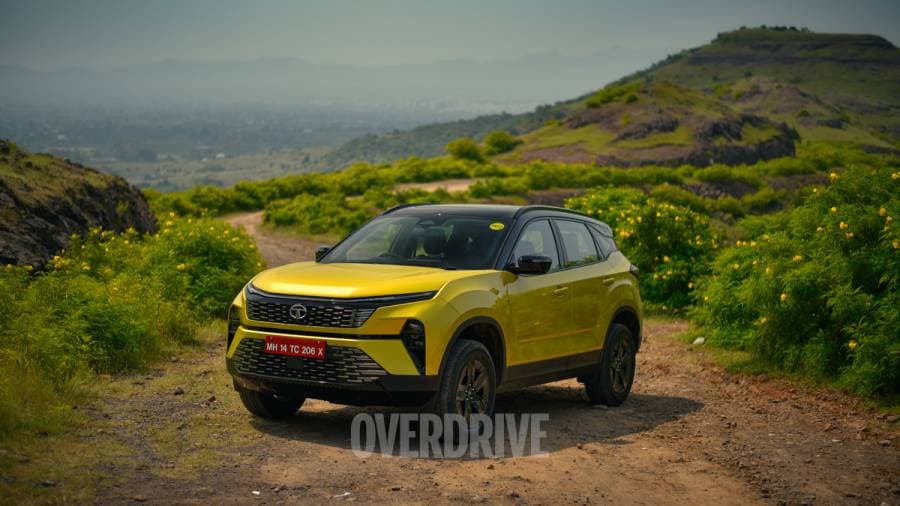
The Harrier and Safari are now more visually distinct with the Harrier carrying an athletic look with the large lower aridam and more swept-back effect to the grilles. The grille has a 3D look to it but seems much leaner with the hot foil stamped metallic inserts on it. Quite a few textures are going around within the light clusters, air curtains and skidplates to match this. Although we suspect these bits and the glossy panels will take some maintenance.
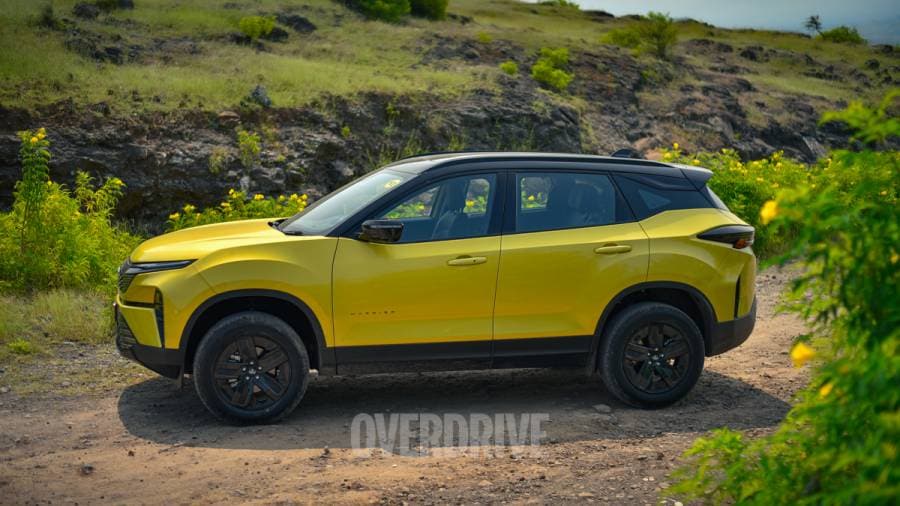
If anything, some of the two-tone contrast from the grille could have been repeated in the wheels. The side profile remains unchanged but it has become more streamlined with the new all-black contrasting look.
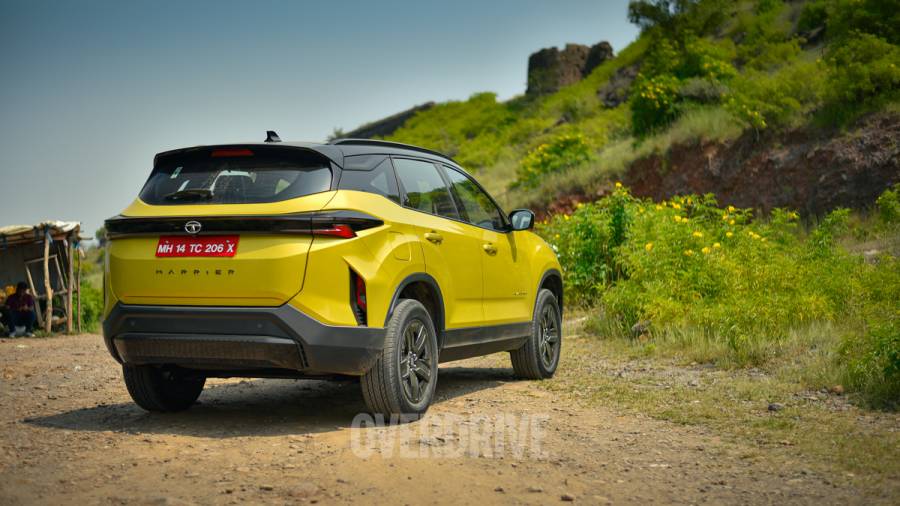
Changes to the rear are small but again effective. We would have liked to have seen the wiper being hidden away as in the Nexon. But the full-width lighting is on trend and stands out further with its sharp tiered design. Not much else has changed aside from the new bumpers that house the reverse lights but again it all fits naturally into the redesign.
2023 Tata Harrier facelift Interiors, space, practicality
Each of the facelifted Tata Harrier's personas has a different theme on the inside. In the case of this Fearless version, it matches the outside with this bold black-yellow package. This will polarize opinion until you realize that it's been largely thoughtfully executed.
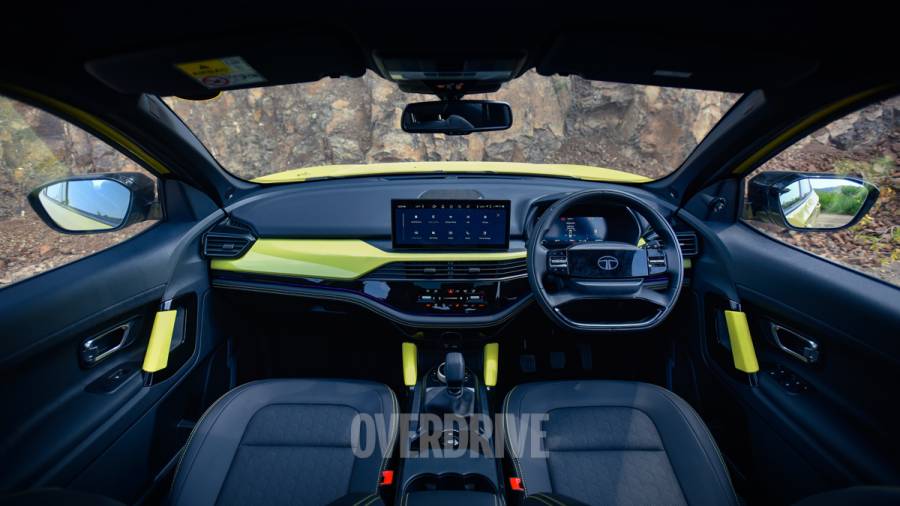
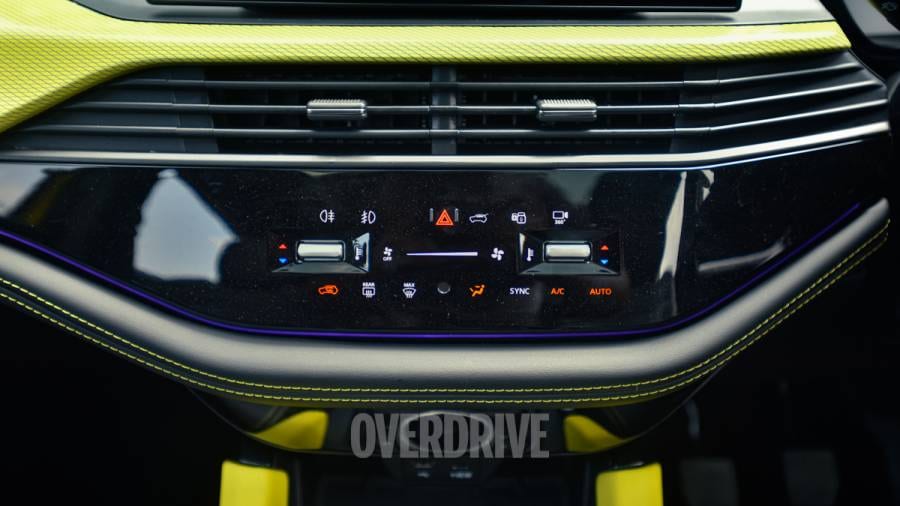
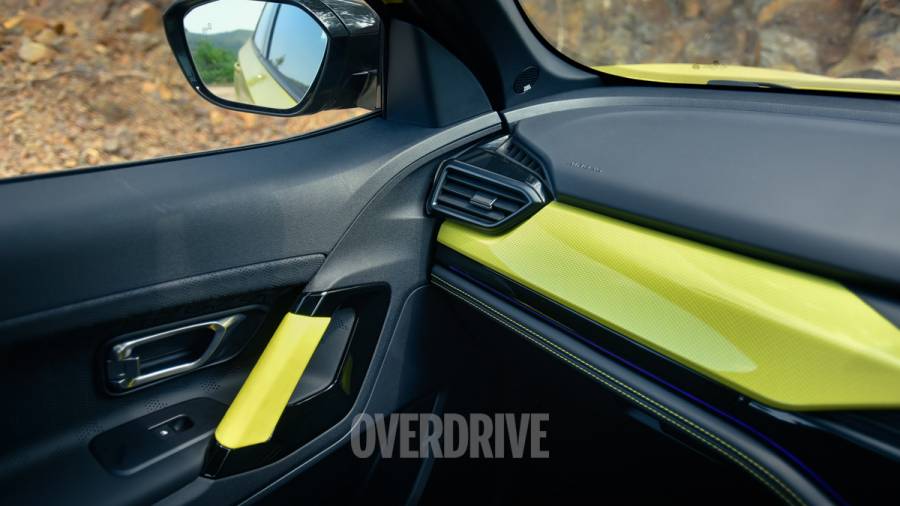
The dash design is new, with plush soft materials on the top and the lower edge, enhanced by the textured contrast stitching that runs through the latter end. You are left a bit cold that the yellow panel with the diamond patterns isn't textured but a good sense of quality comes from the new asymmetric central air vents. The lightness in the design that has come in here is also helped by the new capacitive panel, hidden away as they are when the car is turned off. However, these aren't as easy to use as the large physical controls they replace. This dual-zone arrangement moves the fan controls to a slider panel that we found iffy to operate on the move.
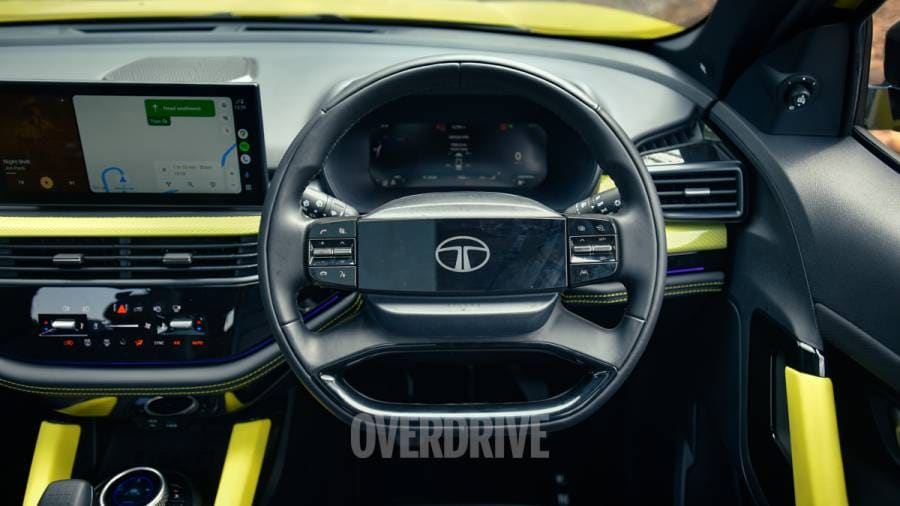

The new glow-up Tata steering wheel carries on with the discreet theme, seen here in a four-spoke design against the two-spoke in the Nexon. It's pleasant to use but you have to work to keep it looking this neat. We found the horn pad to smudge quite easily and the gloss black panels also catch dust easily. But overall quality levels have improved. Panel gaps are more consistent than before and most of the new additions to the cabin seem to fit well. But some of the older switchgear, like the steering wheel stalks and the carried-over buttons and gear lever in the centre console still feel a grade lower than the rest of the cabin.
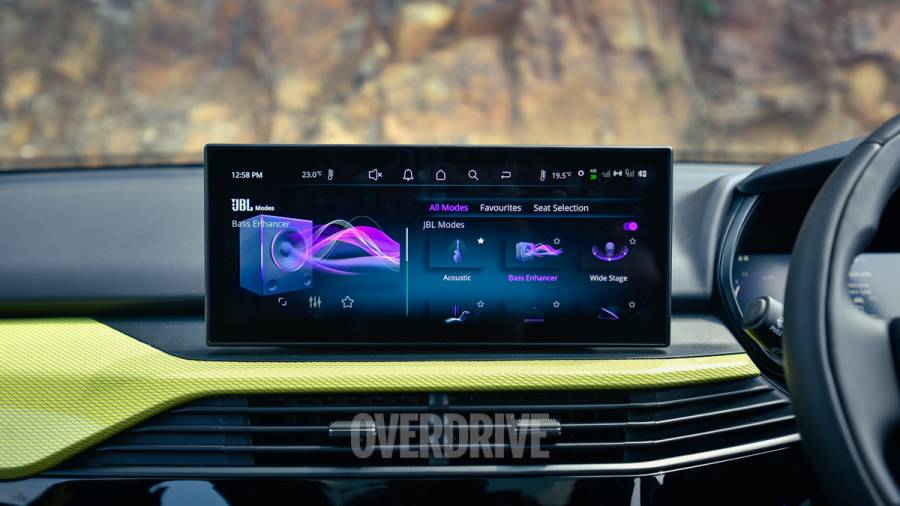
Tata's new tech package is as impressive here as in the Nexon, with most of the bugs we experienced earlier dialled out. So the 12.3-inch central touchscreen is again logically laid out and fluid in its functioning. The widget-based home screen and the phone-like menus let you get used to it easily and the voice commands work with good accuracy too. As before, the wireless Android Auto/Apple carplay pairing is smooth too. More connected features have been added, you also get more sound modes for the now 10-speaker JBL audio as well as mood lighting. These offer a limited range of colours dependent on the persona but again add a nice accent to the dark cabin at night.
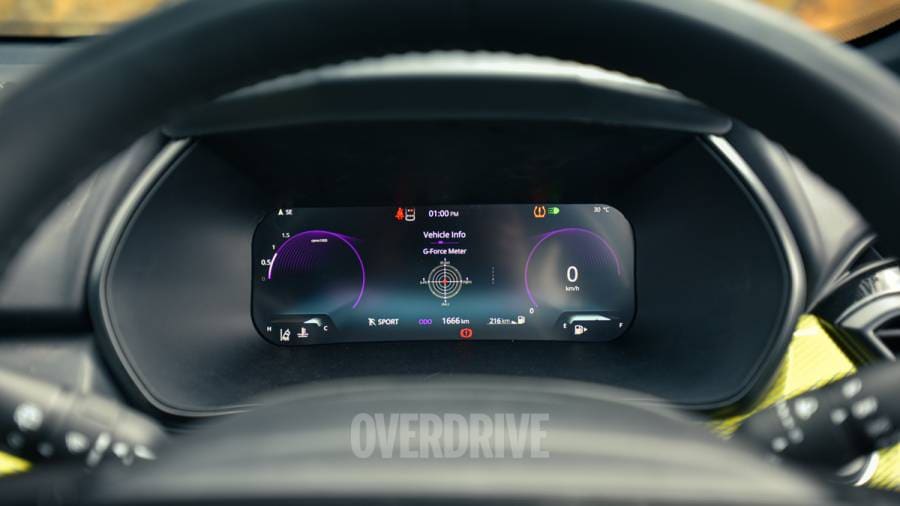
The 10.25-inch instrumentation continues to be a good one with Google Maps projection here especially useful. This feature now offers a full map mode aside from the other available views. Like earlier, this screen is easy to navigate but again we would have liked some of the fonts to have been larger for the dial readouts and the trip data. Also, the purple theme from the screens seems to be a touch out of sync with the heavy yellow around the cabin.

Practicality has been given some thought too. The door-cards haven't been changed with this update but they were quite generous with storage always. But the centre console now gets a 45W Type-C outlet and two more USB ports in the small central bin. This space is small but is cooled and also houses a 12V socket. But most eye-catching here is the new terrain-mode selector. It functions with a slight lag but the crisp screen and textured feel add quite a sense of quality to the cabin.
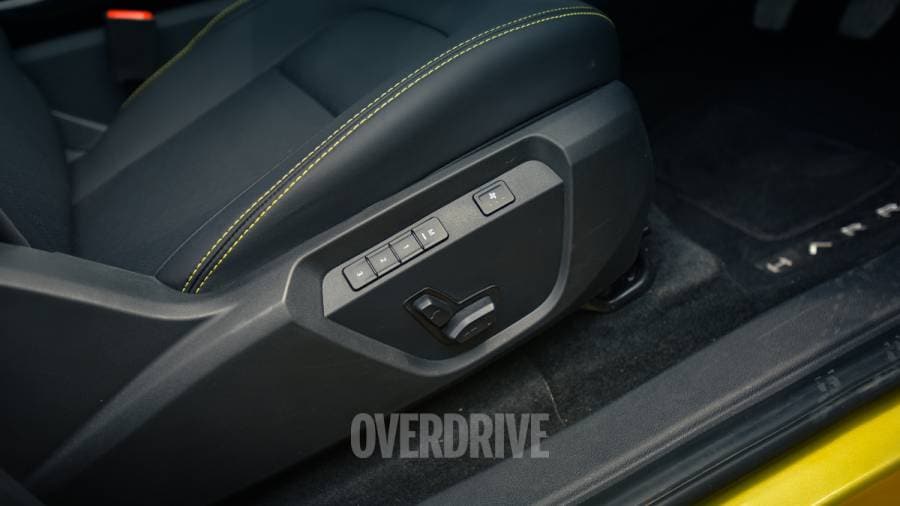
But a lot of you seem to prefer the Harrier for the kind of comfort it offers in both rows and encouragingly that has been enhanced further. The front seats get a wider range of power adjustment aside from being cooled, the great cushioning and support carried over.
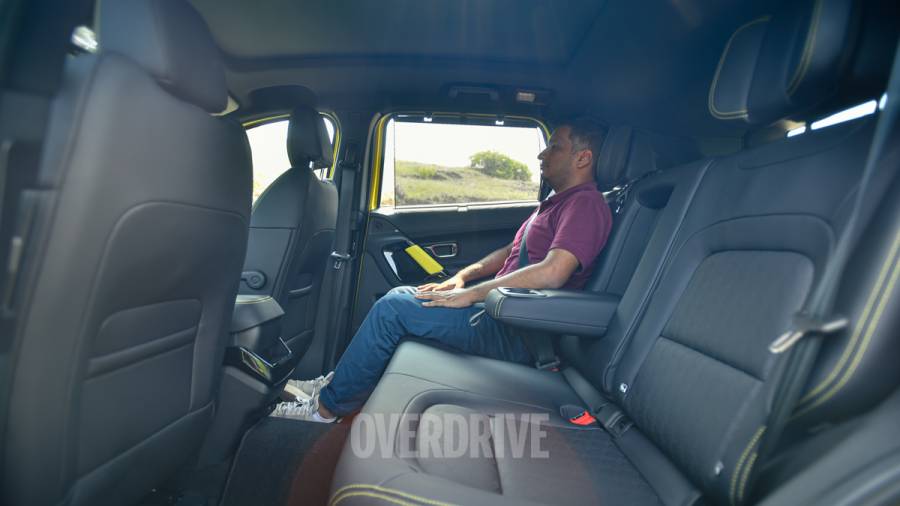
That said, it'll be the ones who like to be driven around who will be most interested. Despite the dark cabin, there's a good sense of space with the large panoramic sunroof and windows. Space was never a problem so you continue to have heaps of head, knee and legroom, a slight hump under the front seats helping your feet a touch more. The cushioning is firm but comforting so long journeys will be easy. There's enough thigh support too. But the new features amp this up. You now get sunshades for the windows as well as aircraft-style winged headrests that work especially well. Aside from this, the good practicality from the front carries over. The Harrier's wide bench also lets you three in relative comfort at the back, despite the small central tunnel.
2023 Tata Harrier facelift driving impressions
Get into the facelifted Tata Harrier's driver's seat and it seems business as usual. You have a good view out front with the high-set seat and the bonnet's bulged edges visible. But the thick A-pillar and large outer mirrors continue to create sizeable blind spots. It's not difficult to find a comfortable driving position, but we would have liked the steering to be reach-adjustable as well for the added ease that brings.
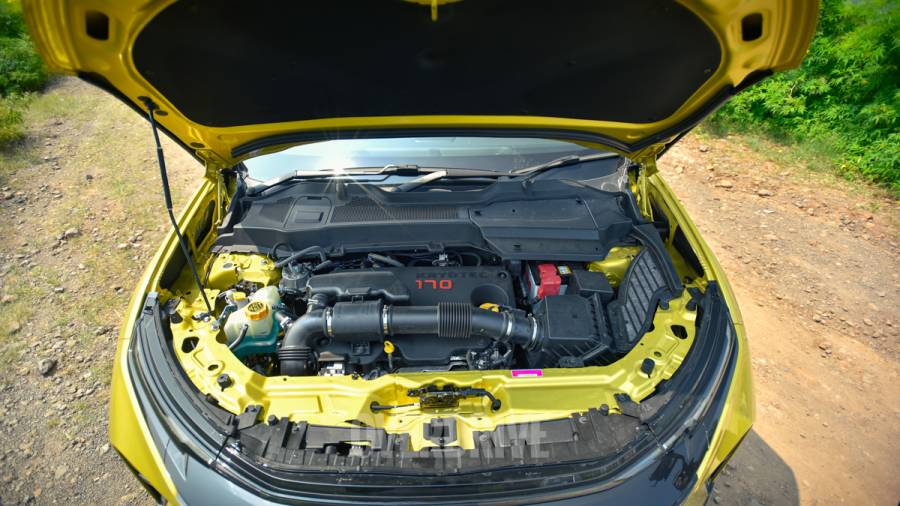
The revised Harrier continues to be powered by the same Stellantis-sourced 2.0-litre diesel with its 170PS and 350 Nm. This can pair with a six-speed manual as seen here or with a six-speed automatic. This motor isn't the most refined of its kind but it's calmer on the inside than before, especially at idle and when you rev out the engine. You still feel some vibrations through the floor and wheel but it's now acceptable for this segment Tata says a notable amount of work has gone into reducing NVH and that seems to have worked.
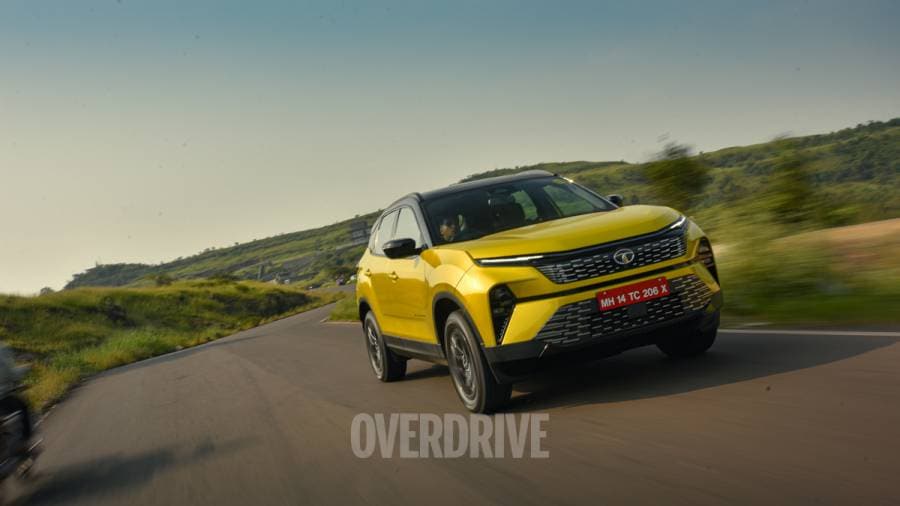
There aren't any surprises in the way the engine works. The Harrier pulls well right past idle and with this sizeable low-end torque, you can tackle all but the tightest of city conditions in second gear. As the road opens up you find the wide powerband to be quite useful. It's easy to overtake and come up to speed on highways in the lower gears and a steady cruise is quite serene too, except for the wind noise that is still present to a small extent around the windows. The motor quietens at this point and the steady diesel grunt works well with the rest of the package to make for a convincing highway machine. The Harrier makes about 140PS in its City mode and we found this adept enough for most needs. The Sport mode with the full outputs isn't too jumpy either adding a sense of urgency when you need it.
The gearbox may not be the slickest shifting out there but it is good enough for the job at hand. It doesn't take too much effort to slot into gears and the clutch is light and progressive enough to not be too much of a pain in the city. If anything the gear lever itself could have been slightly shorter to be a touch easier to use while H-pattern markings could have been more legible.
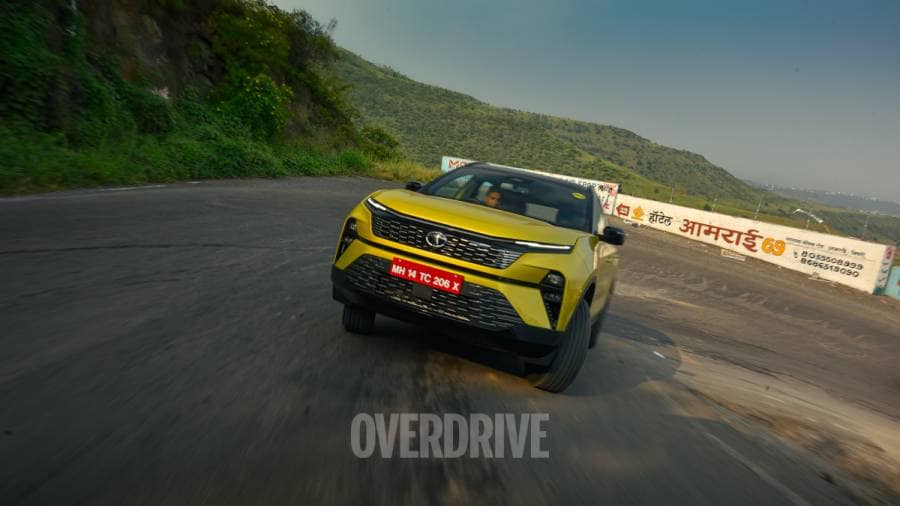
But what has transformed the most with this Harrier, the cosmetic changes included, is its ride and handling character. Tata Motors has moved to an electronic power steering setup with this update and retuned the suspension to match this. So immediately the Harrier now feels a far more compact and agile car to drive. The system finds a good balance between ease and control. So the Harrier is now far easier to manoeuvre in traffic, and with the steering adding weight quite naturally as speeds rise, it feels surefooted on the highway too. This goes well with the sense of solidity that already came through from the architecture and the easy-access diesel torque.
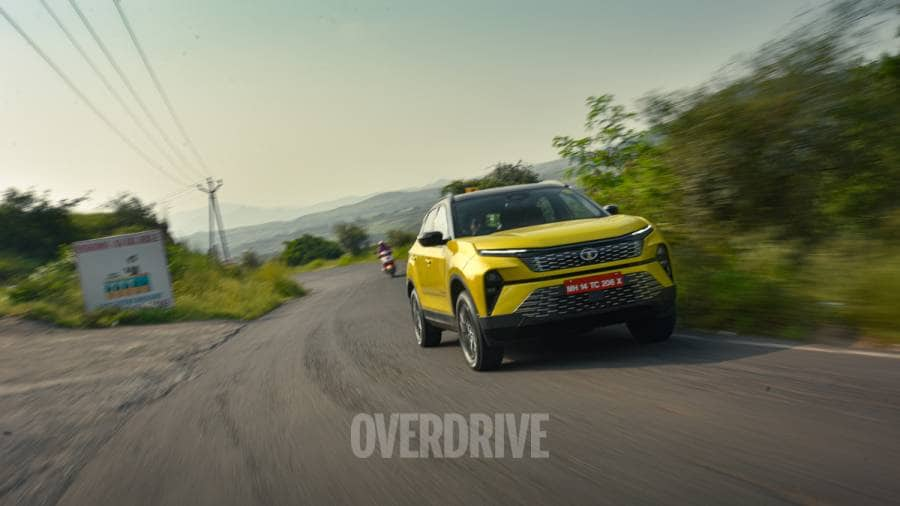
Consequently, the Harrier feels quite secure to drive around a winding road. There's a sense of security from the steering and the body control is quite well managed too, especially for an SUV as large as this one. There's not a lot of lean and the Harrier changes direction confidently. Happily, this hasn't diluted this SUVs best attribute. The sense of toughness remains untouched so you can still barrel through bad roughs and potholes with little hesitation. There's some firmness generally at low speeds but it's never harsh in the cabin with the good damping.
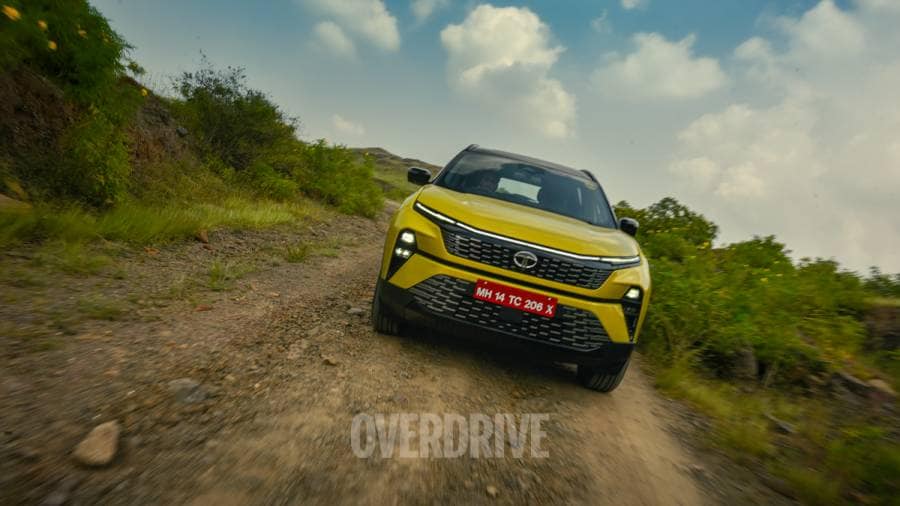
This fully comes through in some of the light offroading we did with the Harrier. On a gravelly trail, we didn't really need to engage the rough terrain mode either. The ESC wasn't too trigger-happy and the Harrier tackles these stretches briskly enough for you to not miss AWD in your everyday driving.
2023 Tata Harrier facelift Safety, ADAS
Tata Motors has doubled down on the Harrier's safety credentials with six airbags now standard and a driver knee airbag added to the top trims. There's a useful 360-degree camera with lane change view, TPMS, ESC and three-point seatbelts for all passengers.

But the most effective addition is that of ADAS with its wider range of features. Automatic variants now get adaptive cruise control but in this manual version, we found the emergency braking and blind spot function to be well calibrated for Indian conditions. These systems aren't as intrusive here as in some other cars, intervening naturally and without too much of the annoying beeps and buzzes. We would have liked the lane departure function to have been a touch more alert but this is still being worked on with more lane assist features to come via updates.

2023 Tata Harrier facelift verdict, expected price
This may be a mid-life update, but the Tata Harrier has become notably more appealing. It's become far more polished in just in the way it looks but also in the way it drives, addressing some of its previous flaws. The minor rough edges in the cabin aside, it also feels like a more special place to spend time in, the long features list playing their part in this. If the Nexon is anything to go by, the Harrier will be priced reasonably too bringing it into much stronger contention in this segment.
The facelifted Harrier will be launched on October 17 and prices should start from around Rs 15 lakh.
Watch our video review of the Tata Harrier facelift below
Images by Anis Shaikh
Also read,
Facelifted Tata Harrier and Safari fuel efficiency figures revealed
Tata Harrier Facelift: Old vs New
New Tata Harrier facelift bookings open in India
Starts Rs 13.69 Lakhs
1956cc
Automatic
170
350
-NA-














